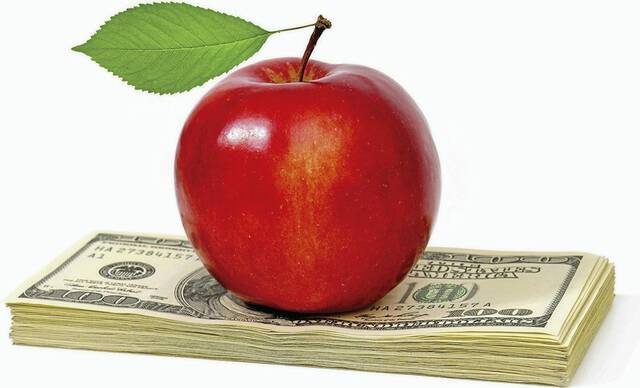David P. Hardy: Where is all the education money going?
State and national media are spotlighting Pennsylvania’s education funding system in the wake of a long-awaited Commonwealth Court decision. While the court did not issue a specific remedy, it acknowledged failures within the state’s education funding system. The court called for reforms that give all our students a meaningful opportunity to succeed.
This ruling is momentous toward introducing revolutionary, innovative solutions to Pennsylvania’s broken education system. Any family trapped in a low-performing — even dangerous — neighborhood school will tell you it’s time to fundamentally reform how we fund student learning.
But right as we should be thinking outside the box, the Pennsylvania School Board Association (PSBA) released its annual “State of Education” report that echoes the same, trite conclusion that it does every year: School districts just need more money.
Really?
What about the latest state budget’s whooping $1.5 billion increase for public schools — the largest increase in state history? This increase was in addition to the over $6.7 billion in federal aid public schools received since the pandemic’s start, of which $3.6 billion still sits unspent in the treasury. Or what about the fact that Pennsylvania was already funding its public schools at almost $20,000 per student, ranking it eighth in the nation for per-student spending?
But it doesn’t matter how much money we throw at public schools because special-interest, taxpayer-funded groups, like the PSBA, exist to ask for more.
PSBA’s new report repeatedly cites “budgetary pressures” and other fiscal concerns. In one section, it says “Not only will school leaders have to continue addressing the impact that the pandemic has had on students and staff, but also the impact on school finances and facilities.” In another, it quotes a school district with “the negative view of educators as well as the constant demand for us to do more with less funding and resources has created a climate that hinders student progress as well as staff satisfaction.”
The report even cites, among other reasons, “inadequate state funding” as a reason for budgetary pressures. Over 73% of school district respondents said their anticipated solution would be to raise local property taxes.
But where is all the education money that’s already in the system going?
Pennsylvania has, for decades, increased public school funding — with little to show for it. A recent audit by the state auditor general suggests that school districts’ cries for more money are nothing new — and too often strategically misleading.
The audit found that, by using a loophole in the law, school districts are raising taxes while stockpiling hundreds of millions of taxpayer dollars — rather than spending that on classroom.
The 12 districts examined repeatedly raised taxes while sitting on ample surplus funds. These districts moved funds between different accounts to disguise their true financial situation and qualify for property tax increases. Employing “common yet questionable practices,” the districts raised taxes while sitting on an average of more than $360 million collectively.
Despite holding reserves, school districts often projected misleading budget deficits.
West Chester’s business office, for example, estimated budget deficits from 2018 to 2021. But the district enjoyed surpluses ranging from $3 million to $13 million — a huge discrepancy.
Similarly, Lower Merion claimed that they were facing a $6 million deficit in 2017 — 18 but enjoyed a $15 million surplus that year.
The point isn’t that school districts are devious or malicious but rather that there needs to more accountability concerning our education dollars. Furthermore, it’s time for new, innovative solutions to propel student learning — not time to settle for the familiar pattern of flushing public schools with more cash.
Pennsylvania currently falls behind other states, like Utah and Iowa, that already passed Education Savings Account (or ESA) programs this year. ESAs are restricted-use accounts that allow families to directly access public education dollars for tuition, curriculum, tutoring, and other educational expenses. These ESA programs free students from underperforming schools, empowering them to choose the best environment for their unique learning needs.
The Commonwealth Court said we have a constitutional obligation to ensure our students have opportunity and was clear that reforms should not be “entirely financial.” We need to transform our education system — not just continue to fund the broken one we have.
David Hardy, co-founder and retired CEO of Boy’s Latin of Philadelphia Charter School, is a distinguished fellow at the Commonwealth Foundation.
Remove the ads from your TribLIVE reading experience but still support the journalists who create the content with TribLIVE Ad-Free.

